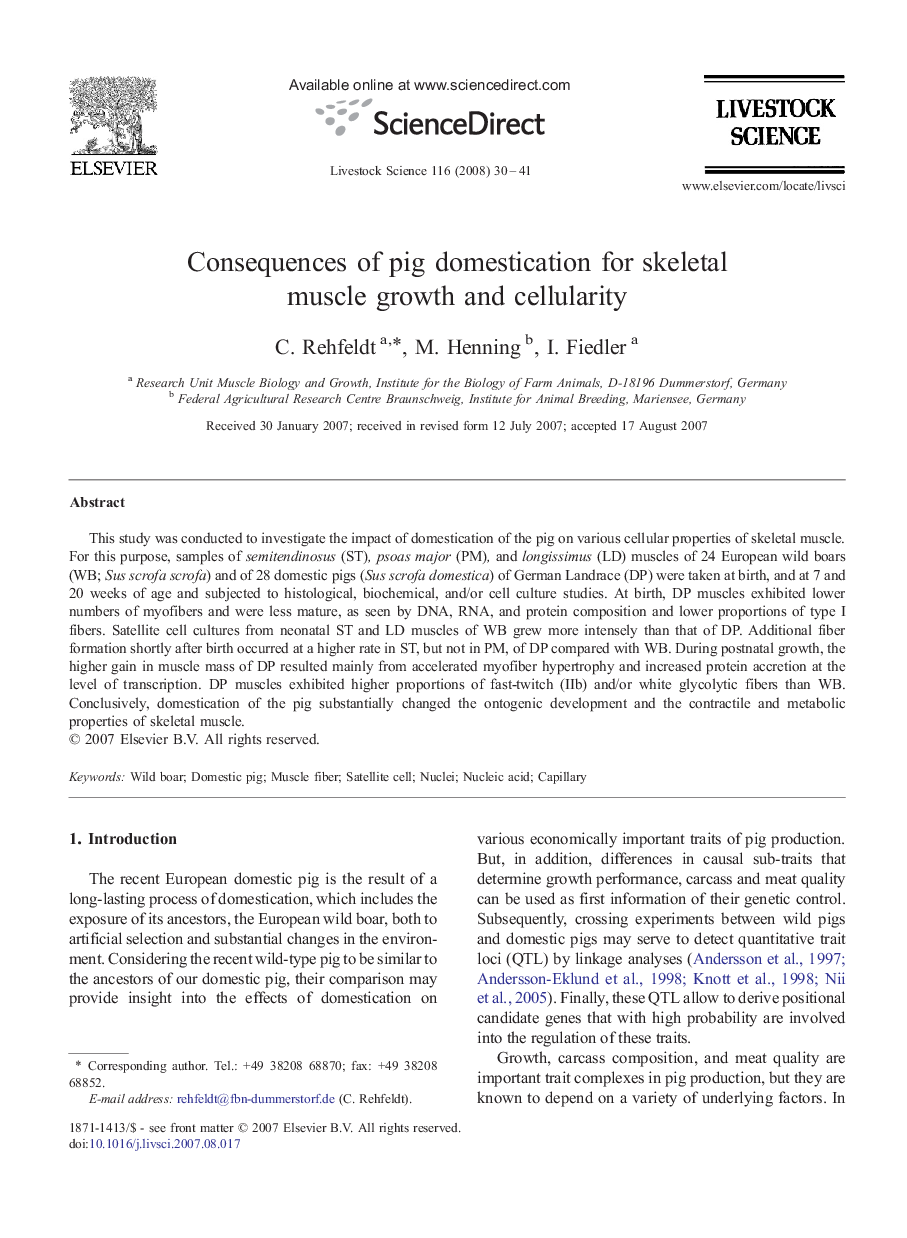| Article ID | Journal | Published Year | Pages | File Type |
|---|---|---|---|---|
| 2448406 | Livestock Science | 2008 | 12 Pages |
This study was conducted to investigate the impact of domestication of the pig on various cellular properties of skeletal muscle. For this purpose, samples of semitendinosus (ST), psoas major (PM), and longissimus (LD) muscles of 24 European wild boars (WB; Sus scrofa scrofa) and of 28 domestic pigs (Sus scrofa domestica) of German Landrace (DP) were taken at birth, and at 7 and 20 weeks of age and subjected to histological, biochemical, and/or cell culture studies. At birth, DP muscles exhibited lower numbers of myofibers and were less mature, as seen by DNA, RNA, and protein composition and lower proportions of type I fibers. Satellite cell cultures from neonatal ST and LD muscles of WB grew more intensely than that of DP. Additional fiber formation shortly after birth occurred at a higher rate in ST, but not in PM, of DP compared with WB. During postnatal growth, the higher gain in muscle mass of DP resulted mainly from accelerated myofiber hypertrophy and increased protein accretion at the level of transcription. DP muscles exhibited higher proportions of fast-twitch (IIb) and/or white glycolytic fibers than WB. Conclusively, domestication of the pig substantially changed the ontogenic development and the contractile and metabolic properties of skeletal muscle.
